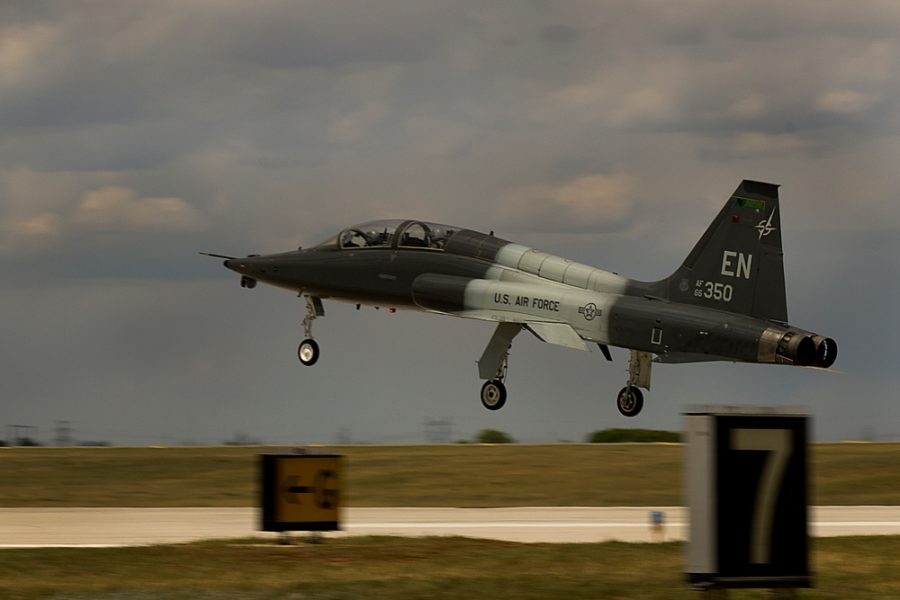Poor communication and reactions from a pair of instructor pilots were the main causes of a fatal T-38 crash at Laughlin Air Force Base, Texas, in November 2021, that killed a student pilot and injured two others, a recently-released Air Force accident report found—and Air Education and Training Command has taken action in response.
The incident in question took place on Nov. 19 on the runway at Laughlin, involving two T-38s, the Air Force’s supersonic trainers, attempting a formation approach. The pilot killed was identified as 2nd Lt. Anthony D. Wentz, 23, a student in the 47th Flying Training Wing.
The Air Force Accident Investigation Board report, released May 25, detailed how Wentz was flying in the front of one T-38’s cockpit with an instructor pilot in the back, with another instructor pilot flying solo in the other trainer.
The sortie mission was part of Wentz’s pre-solo two-ship formation block of training—after the two jets swapped lead positions midway through the flight, they returned to base to conduct a formation approach—with Wentz and the instructor’s plane supposed to “clear off” the other instructor to land, then separate and perform a low approach.
However, during the pre-flight briefing, the instructors included a caveat that the plane that would land on the initial approach could change “if there was a difference in fuel.”
But when it came time for the formation approach, the instructor pilot in Wentz’s jet “failed to communicate” and the other instructor pilot “failed to verify” which plane would be landing—with a difference of 30 pounds of fuel, the instructor in Wentz’s plane “appears [to have] interpreted any fuel difference as sufficient to alter the plan,” while the other instructor did not.
Neither instructor explicitly confirmed a change in the flight plan, and both failed to intervene at several points when they could have requested more clarity.
On top of that, the instructors used differing techniques during the approach, and the student’s callsign usage became confusing as a result of the two jets changing lead positions, preventing the tower or the instructor pilot not in his jet from realizing that Wentz and his instructor believed they were supposed to be landing.
As a result, the first jet with one pilot landed, and a second later, the other T-38 with Wentz and his instructor landed virtually on top of it. The second plane’s nose landing gear impacted the first’s left horizontal stabilizer, and the second plane rolled. The instructor initiated the ejection sequence, but as the plane was inverted, Wentz’s ejection was “interrupted by the ground,” the report states, resulting in fatal injuries.
The instructor pilot suffered life-threatening injuries from his ejection and was transported to Brooke Army Medical Center in San Antonio. Due to his medical condition, he was not interviewed for the report. The report found that he failed to recognize a dangerous situation developing when he did not notice the other plane approaching the runway in a descent below them, which “would have been alarming and prompted immediate action.”
As a result of the mishap, Air Education and Training Command has expanded its training guidance for pilots for formation approaches, “further defining mission briefing requirements, raising the minimum altitude for this maneuver, re-emphasizing deconfliction responsibilities, and standardizing radio procedures to reduce the possibility of confusion,” spokeswoman Capt. Lauren Woods told Air Force Magazine in a statement.
The changes come just a few years after AETC stopped performing T-38 formation landings—when both planes land together—after a student pilot and instructor died in a crash. The Combat Air Force, which pilots enter after graduating from training, had already almost completely ended the practice.
Formation landings are still allowed during emergencies, and formation approaches, where one plane approaches the runway but doesn’t actually land, have remained a part of training.

